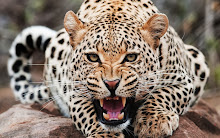Link: http://www.youtube.com/watch?v=cPeuGThxeuc
The ‘baby nightmare’ scene from highly successful DreamWorks Animation SKG ‘Shrek the Third’ (2007) entertains but also educates to the audience that looking after a baby is tough and stressful.
Parenthood is tough and stressful. In the film, Shrek discovers that he is going to be a father. The daunting prospect of being a father is represented in the ‘baby nightmare’ scene. When Shrek takes off the blanket on the cot, it reveals a baby. A close up of Shrek’s face with him saying “Oh no” illustrates how reluctant and how scared he is at the prospect of being a father. Shrek’s reactions and views towards being a father (fear, frightened, scary) reflects reality for people who have gone through the phase. Animation films are unique in that they appeal to all age groups from “the eight year olds to the thirty-eight year olds” (quote from Justin Timberlake). Whilst the main target audience, children, may view the scene passively, adults on the other hand may view the scene in an active way in that the prospects of having a baby to look after can be terrifying as its means a lot of sleepless nights and stress. Also the factor of whether they have the confidence in themselves to be a good parent.
Babies are represented as being tough to handle and require constant care and attention. Stereotypically babies are cute and adorable, however in terms of looking after them they can be a handful as they constant attention. The medium shot of the ‘baby crying’ followed by Shrek desperately trying to stop the baby crying illustrates reality and how babies are a handful to look after. Also by having continuous shots of babies in danger such as ‘flying around the room’, ‘falling of the lamp’, pulling the table cloth with knifes on the table’, ‘a baby lighting a match’ emphasises the point that as parents babies need constant vigilance as they can get up to anything dangerous in which they are not aware off. Babies explore their world by feeling around, pulling and pushing as they are curious to learn about the world around them however this in turn can also be dangerous as if they stumble across something dangerous they can get hurt. A medium shot of one of the babies looking at the lighted match stick is amazement demonstrates how curiosity can be dangerous. In addition, the use of having a ‘spotlight on the pram’ illustrates the focus of the scene whilst the image of a pram connotes babies.
In the scene, Shrek is having a nightmare. A nightmare is a type of dream which brings out feelings of intensity and fear. Furthermore it is a type of dream which is usually common in childhood. This identifies with the audience in that the main audience are children. For Shrek, the use of having lots of babies, for example a medium shot of lots of babies coming into the room like water overflowing illustrates Shrek’s state of mind in that babies are everywhere in his mind, and he’s scared and wants to get out and even his friends, Donkey and Puss in Boots heads turn into baby ogre heads. In addition the close up of ‘Shrek yelling as he wakes up from the dream’ is stereotypical as after a nightmare you tend to suddenly wake up. In addition, aspects of the mise-en-scene create tension, for example the dark room and the door slamming behind Shrek create tension as Shrek has just been trapped in a dark room. This in turn both engages the audience and evokes fear as their hero Shrek is trapped.
Shrek the Third (2007) is one of the most successful CGI animated films of its individual genre. The film generated a staggering £61 million at the U.S. Box Office making it the third highest ever intake in both animation and movie history. Whilst the film showcases some of the most astonishing ground-breaking animation seen, by the film also focusing on current issues and debates in our society such as female power in current society, childhood, parenthood and more, it makes the film successful as the film is identify with its audiences. Comedy is a key ingredient for an animated film and Shrek is very successful at this. For example in the extract ‘when the ogre baby burps’(this to a child would be humorous) and when Shrek says “Better out than in, I always say” immediately followed by the baby throwing up like a jet of water from a fire hose creates comedy. The comedy is also intelligent in that Shrek’s advice to the baby is then exaggerated.
To conclude, the ‘baby nightmare’ scene reflects how parenthood and its prospects can be frightening and how much care and attention is needed to look after a baby.


No comments:
Post a Comment